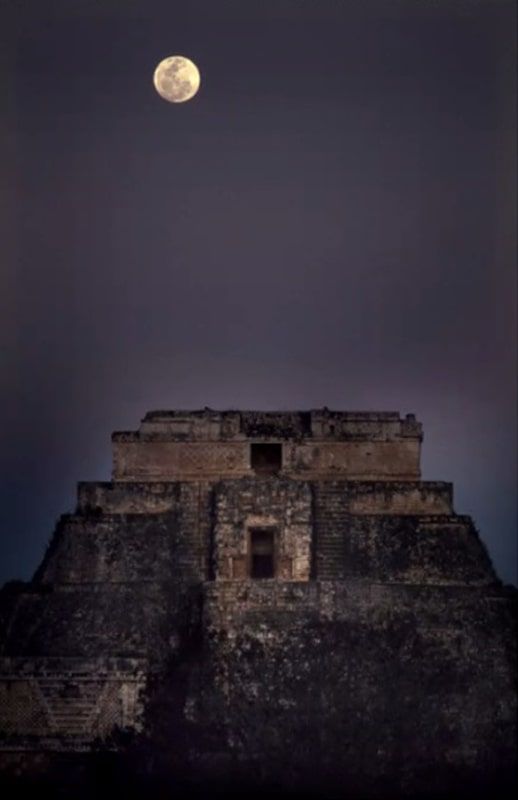Total Solar Eclipse in Mexico-Tenochtitlan Could Have Been a Divine Sign
The scientific version of the archaeoastronomer Jesús Galindo Trejo, affirms that this fact could have been interpreted as a divine manifestation. The International Day of the Moon is commemorated on July 20.

On April 21, 1325, from 11:00 to 11:06 a.m., the year of the foundation of Mexico-Tenochtitlan, the Moon covered the Sun. This total solar eclipse, said Jesús Galindo Trejo, a specialist in Archaeoastronomy of Pre-Hispanic Mexico at the UNAM, could have been the signal to say: "here we stay... the fact had some participation in the decision to stay here".
The specialist of the Institute of Aesthetic Research (IIE) of the UNAM, and for more than two decades researcher of the Institute of Astronomy (IA) in the areas of astrophysical plasmas and solar physics, explained in an interview: for a people whose main deity was the Moon and the Sun, the moment of this natural phenomenon could have been interpreted as a divine sign.
"The fact could have indicated the moment to stay here in the Valley, but the lavish foundation of the city could have been later, because the Mexica would have waited two periods of 13 days after the eclipse, so that on May 17, 1325, they founded the city, because it is just the moment in which at noon the Sun reaches the Zenith, and the Mexica and other cultures of Mesoamerica identified this phenomenon as the instant in which there is no shadow at noon", he explained.
Even though the United Nations General Assembly declared July 20 as International Moon Day, to commemorate the anniversary of the first landing of human beings belonging to the Apollo 11 Lunar Mission in 1969, and thus sensitize the international community about the importance of sustainable exploration and use of the Moon, Mesoamerican peoples have been observing and analyzing it for more than six centuries.
Since humans have been on Earth, they have looked at the "roof of the world" because it is a source of wisdom, it is part of nature. In primitive cultures the sky gives the possibility of organizing time, calendars are cultural objects that serve to organize society and its activity, commented Galindo Trejo.
Being such a striking object that can be easily followed, added the doctor in Theoretical Astrophysics at the Ruhr Universitaet Bochum in Germany, it was considered a deity and also for practical matters, because before there was a solar calendar there was a lunar one, due to the easy tracking of the phases.
"If in a full moon we observe its seas, we will distinguish that it resembles a rabbit: its body, its tail, this was not only observed by oriental cultures, but also by the Mesoamericans. It is the Rabbit of the moon, which is drawn by Father Sahagun, a chronicler of the sixteenth century. When we see the moon rising, the little rabbit is standing up, and when it goes in, it does so upside down," he explained.

Natural Spectacles: The Moon, Sun, and Eclipses
Protagonist beyond contemporary history, it is the brightest nocturnal object, but it can also be seen during the day as a water seal. The Moon and the Sun participate in eclipses; in fact, without the sun we would not be able to see it because it emits light and it, like a mirror, reflects it, explained the IIE researcher.
"The Moon makes eclipses possible, which is one of the largest and most striking phenomena in nature. From the moment humans observe the sky for the first time, it is possible to think that the process to penetrate the Universe begins. If the ancients had not directed their eyes to the sky, we would not be able to penetrate it," he added.
The member of the International Astronomical Union and author of the book "Archaeoastronomy in Ancient America" recalled that in 1611 the first eclipse occurred after the so-called Conquest of Tenochtitlan, considered "a bite of the Sun".
He anticipated that on October 14, 2023, an annular eclipse will occur, when the Moon is farther away than average and its angular size is smaller than when it crosses and tries to cover the Sun's disk, it does not manage to fill it, and then a ring is defined that will be observed in a trajectory that will pass through the Yucatan Peninsula.
Something more impressive, he said, will occur on April 8, 2024. For four and a half minutes we will observe it in the middle of the day: "We will see an artificial night, the Moon will completely cover the Sun's disk. We will be able to see the corona, the planets, and the stars and this will only be seen for a 200 kilometers trajectory; it will start in the Pacific, it will enter through Mazatlan in Sinaloa, and it will also be seen in Durango, Coahuila and then it will move to Texas. It will be worthwhile to travel to this strip and observe this phenomenon".




